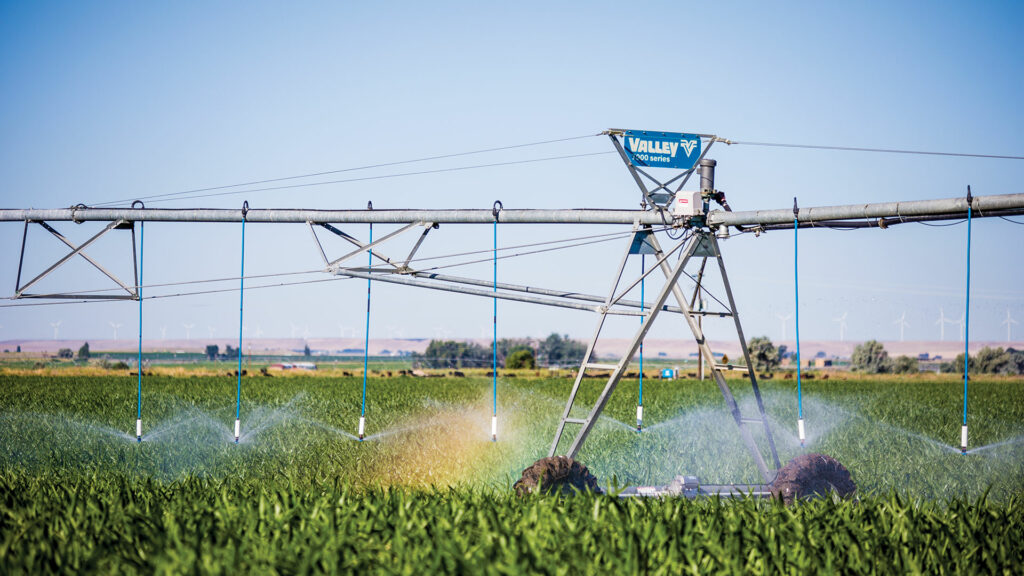
Modern agriculture heavily relies on innovative irrigation systems to ensure efficient water usage and maximum crop yield. One such system that has revolutionized irrigation practices is the center pivot sprinkler. This article delves into how center pivot sprinklers work and how they enhance crop production in agricultural fields.
Understanding Center Pivot Sprinklers
Center pivot sprinklers are irrigation systems that consist of an extensive network of pipes, sprinkler heads, and a central pivot point. These systems are typically installed in large, circular fields and are designed to rotate around the pivot point, providing uniform water distribution across the entire field. Here's how center pivot sprinklers work:
Components of a Center Pivot Sprinkler System
- Pivot Point: The central point from which the system rotates, usually powered by electric motors.
- Pipes: Long pipes that supply water from the water source to the sprinkler heads.
- Sprinkler Heads: Devices attached to the pipes that distribute water over the field.
- Control Panel: An electronic control system that manages the operation of the sprinklers.
Operation of Center Pivot Sprinklers
Center pivot sprinklers are typically set in motion by the electric motors at the pivot point. As the system rotates, the sprinkler heads release water, creating a circular pattern of irrigation. The rotation of the system ensures that each area of the field receives an equal amount of water, preventing overwatering or underwatering in specific areas.
Advantages of Center Pivot Sprinklers
Center pivot sprinklers offer several advantages over traditional irrigation methods, making them a popular choice among farmers and agriculturalists. Some of the key benefits of using center pivot sprinklers include:
Efficient Water Usage
- Center pivot sprinklers distribute water evenly across the field, reducing water wastage and maximizing water efficiency.
- The controlled application of water helps prevent water runoff and ensures that crops receive the required amount of moisture.
Cost-Effective Irrigation
- While the initial investment in a center pivot sprinkler system may be high, the long-term cost savings in terms of water usage and labor make it a cost-effective irrigation solution.
- Automated operation reduces the need for manual labor, saving time and resources for farmers.
Increased Crop Yield
- Uniform water distribution provided by center pivot sprinklers promotes healthy crop growth and higher yields.
- Consistent moisture levels in the soil help prevent drought stress and improve overall crop health.
Applications of Center Pivot Sprinklers
Center pivot sprinklers are versatile systems that can be used in a variety of crops and field types. Some common applications of center pivot sprinklers include:
Field Crops
- Center pivot sprinklers are ideal for irrigating large field crops such as corn, soybeans, wheat, and barley.
- These systems ensure uniform water distribution in extensive crop fields, promoting optimal growth and yield.
Fruit Orchards
- Center pivot sprinklers can also be used in fruit orchards to provide controlled irrigation to fruit trees.
- By delivering water directly to the root zones of the trees, these systems help improve fruit quality and yield.
Vegetable Gardens
- For smaller-scale operations such as vegetable gardens, mini center pivot sprinkler systems can be employed to efficiently water crops.
- These systems are versatile and can be customized to suit the specific irrigation needs of different types of vegetables.
Conclusion
Center pivot sprinklers have revolutionized the way crops are irrigated, offering a sustainable and efficient solution for modern agriculture. By providing uniform water distribution, reducing water wastage, and enhancing crop yield, these innovative irrigation systems play a crucial role in ensuring food security and agricultural sustainability. As technology continues to advance, we can expect further innovations in irrigation systems that will further optimize crop production and water usage in the agricultural sector.
